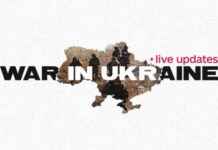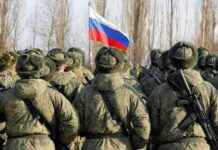The cold war may be over, but the battle over technology flows to hostile states continues to rage on. An analysis published in Foreign Policy sheds light on the challenges facing current Western export controls in restricting military technology transfers to sanctioned countries, highlighting a stark contrast with the success of Cold War-era measures.
During the Cold War, the Coordinating Committee for Multilateral Export Controls (CoCom) effectively prevented the Soviet Union from acquiring cutting-edge electronics for weapons production. This restriction played a crucial role in influencing Soviet decision-making and limiting their access to critical military technology.
Fast forward to today, and the landscape looks vastly different. A recent study by the National Anti-Corruption Bureau of Ukraine (NAKO) reveals that sanctioned states like Russia, Iran, and North Korea are easily accessing Western electronics for their military arsenals. In fact, US companies alone account for 64% of components found in Russian weapons, showcasing a significant loophole in the current export control system.
Challenges of Modern Export Controls
The analysis points out three critical failures of modern export controls that have contributed to the loopholes exploited by sanctioned states:
1. Lack of a centralized organization coordinating sanctions and enforcement
2. Weak consequences for companies that fail to perform due diligence
3. Limited accountability for nations enabling sanctions evasion
The 1996 Wassenaar Agreement, which replaced CoCom, lacks the robust enforcement mechanisms and regular coordination meetings that made its predecessor successful. This gap has allowed countries like Russia to navigate between different nations’ sanctions regimes and continue to access Western technology for military purposes.
Implications and Recommendations
The researchers argue that the post-Cold War era of technological restrictions, known as pax technica, is coming to an end. They emphasize the need to rebuild institutional frameworks and demonstrate stronger political will for enforcement to restore the effectiveness of Cold War-era controls.
The implications of these challenges extend beyond immediate military concerns. Restricted access to advanced electronics during the Cold War played a significant role in shaping strategic decisions. Today, the more porous nature of current export controls may be reducing the pressure on contemporary adversaries, allowing them greater access to critical technologies.
As the debate over the flow of Western technology to hostile states continues, it is clear that a renewed focus on strengthening export controls and enhancing enforcement mechanisms is crucial to safeguarding national security interests. By addressing the shortcomings of the current system and learning from the successes of the past, policymakers can work towards a more robust framework that effectively prevents the proliferation of military technology to sanctioned states.
Support our independent media outlet by disabling your ad blocker, as we rely solely on advertising revenue to sustain ourselves. Your assistance enables us to continue providing quality content. Thank you for your support.

















